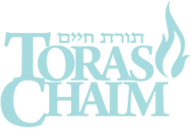When Hillel the Elder would celebrate the Simchas Bais HaShoeiva, he would say: ‘If I am here, everyone is here; if I am not here, who is here? (TB Succah 53a)
This apparently egotistical statement would be surprising coming from anyone’s mouth; it is astounding to hear it from Hillel, a man who was widely lauded for his humility! This problem led Rashi and Tosfos to explain that Hillel was not really referring to himself, but speaking either on behalf of G-d or on behalf of the Jewish people as a whole.
We may, however, be able understand Hillel’s statement according to its plain meaning.
Hillel’s humility, was noted in the context of how he welcomed and encouraged those who were not the best of people, ענוותנותו של הלל קרבנו תחת כנפי השכינה. We are familiar with the Talmudic story (TB Shabbos 31a) of the three people who had come first to Shammai and then to Hillel, each of whom wanted to join the Jewish people, each with unrealistic and inappropriate expectations. While Shammai understandably rejected them, Hillel welcomed them, put up with their weaknesses and built upon their strengths.
The Talmud (TB Gittin 52a) similarly records a Halachic debate between the students of Shammai and Hillel regarding how one engages in Teshuva for having stolen a beam that they then used in building their home. Shammai required the person to demolish the home in order to return the beam, while Hillel allowed him to leave the beam in place and compensate the person from whom he stole it. Hillel’s argument was Takanas HaShavin, we need to make Teshuva accessible. If we set the bar too high, many will never make it over. But if we are understanding and allow those who remain very flawed to take small steps towards G-d and goodness, Hillel was confident that they would eventually go the distance, בטוח הי‘ הלל דסופו לעשות לשם שמים (see TB Yevamos 24b, Tosfos Lo Biyemei).
This welcoming attitude seems to accurately reflect G-d’s attitude towards us, especially as expressed in the closing words of Yom Kippur. During Neilah we say of G-d: אתה נותן יד לפושעים וימינך פשוטה לקבל שבים, “You give a hand to the sinners and your right hand is extended to accept those who do Teshuva.” We describe G-d as embracing the sinner with both hands, so to speak, left and right. This stands in sharp contrast to those who would push away the sinner with both hands, and is even more welcoming than the Talmudic formula of pushing away with the left hand while bringing close with the right hand, the stronger hand (TB Sotah 47a). This is not enough for G-d, who on Yom Kippur uses both hands to bring us close. And it was not enough for Hillel, who embraced everyone who exhibited even a glimmer of interest in doing better.
Which brings us back to Hillel and the Simchas Bais HaShoeiva, the ultimate celebration of Succos. This event was a celebration of Teshuva, with those who had accomplished Teshuva dancing in the center of the circle together with the greatest Tzaddikim (see TB Succah 53a). Teshuva is of course at the core of the entire festival of Succos, coming as it does on the heels of Yom Kippur. Hillel is thus saying that if I am here – if my attitude prevails – and we as a community of the righteous will readily welcome those who are not yet so righteous into our circle, then we will eventually see everyone here, everyone joining in this great dance of unity and closeness to G-d.
We all know that the four species of Succos represent four kinds of Jews, from the most learned and righteous to the most ignorant and simple. Yet, bound and held together, we produce beautiful song – each of us – for the Almighty.
May this be a model that we follow and live in our lives, joining together with a warm and encouraging welcome, elevating each other and all whom we encounter to bigger and better things.
With sincere best wishes for a Chag Sameiach and Gmar Tov,
Rabbi Moshe Hauer
